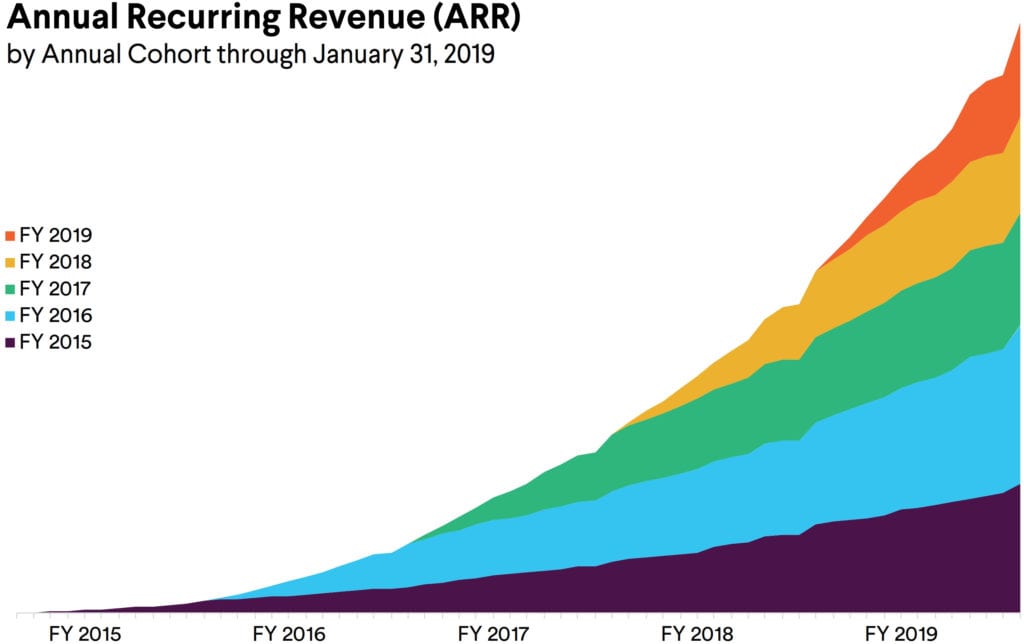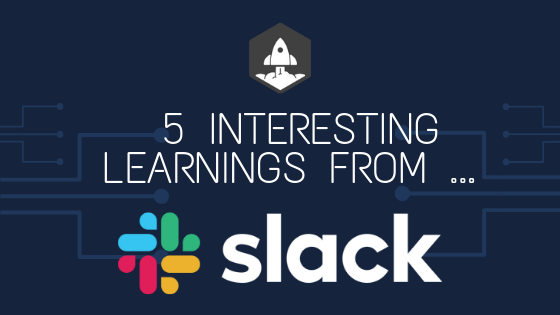With Slack’s IPO data and financials finally public, what is left to know about the app we all use and have been reading about for years?
What’s interesting to know about Slack … that we didn’t already know? 🙂

Slack is obviously a rocketship going from $0 to ~$600m+ ARR (!) in 5 years (OMG), growing 80%+ Year-over-Year, and more than 1 billion messages sent a week (!). As part of our new 5 Interesting Learnings series, here are a few:
- Freemium continues to scale for Slack, but now more as a lead gen tool. Many folks think that Freemium has a natural ceiling, and perhaps sometimes it does. But not yet for Slack. Slack has 600,000+ total organizations using it, with 88,000 Paid Customers with 3+ seats … but also 500,000 organizations on their Free plan. But note Free serves two purposes. Only 8% of Slack’s revenue last year was from direct conversion from Free to Paid — and that’s down from 10% the year before. That’s material, but not huge. Free also serves as a hunting ground for sales to find prospects and leads. Slack notes this is now the primary value of self-service (lead generation vs. direct conversion).
- But also — Slack has gone Enterprise. Way Enterprise. It took a little while. You can see our fun video with Stewart Butterfield from SaaStr Annual 2015 where he said they’d never have a direct sales force. That has changed. Today, Slack has 575+ customers paying more than $100k a year, which important now accounts for 40%+ of its revenue. That’s way, way up from just 22% of revenue from $100k+ deals in 2017. The S-1 is full of enterprise case studies, from Oracle to Fox to Splunk.
- The big deals also take time, even for Slack. You can’t eliminate sales cycles, even for the top brands with freemium apps. “The sales cycle for Enterprise Grid typically extends for multiple months, [which] may also cause us to experience a delay between increasing operating expenses and the generation of corresponding revenue, if any”. Sales is still sales, and with bigger deals, there are human-led processes to go through. Even for Slack.
- Revenue Retention / Net Negative Churn of 143%. A continued them of our 5 Interesting Learnings Series. All the great SaaS companies IPO’ing now have strong revenue retention, whether SMB or enterprise focused.
- Not burning that much cash. Yes, Slack has not been as efficient as Zoom. But at $600m+ in ARR it’s only burning $97m a year. Again, having a viral app helps a lot here. With $840m in the bank, Slack has essentially infinite runway. (Hence, the direct listing).
And a few bonus ones:
- Slack has to do SLAs for its enterprise customers — with service downtime credits. So don’t complain when you have to, too.
- 35% of Slack’s revenue has been from outside the U.S. for the past 3 years. That’s about what I’d expect for a partially self-service product that is localized early. This is also a reminder why localizing early can be a nice boost to your growth, too.
- “Fair billing” is still the norm, but (some) bigger customers have more traditional fixed contracts. I love the nature of Slack giving you a credit for seats not used — it takes significant friction out of an application that is “internally viral”. But again, as Slack has become more enterprise, they note that “Other paid [bigger] customers have a type of subscription agreement where they are charged a fee based on the number of purchased user subscriptions, but billing is fixed and independent of usage”.
- Slack does all the traditional enterprise marketing stuff now. “These efforts include a globally distributed field sales force, solutions engineering, demand generation campaigns, webinars, analyst relations, C-suite events, cooperative marketing efforts with our partners, and hosted user conferences, highlighted by Frontiers, our annual user conference.”
- The Slack Fund is tiny. “As of January 31, 2019, Slack Fund has invested $10.1 million in 46 companies, with $5.2 million funded by Slack and the balance funded by the venture capital funds who partner with Slack Fund.”
- Slack was late to patents, but now is filing a lot. Slack only has 1 issued patent, but has 80 pending applications. Most of us way on patents, which makes sense. But it’s a trade-off.
- Stewart Butterfield was granted a material number of additional shares, subject to new vesting. If you stay long enough, as CEO at least, you’ll often be granted additional shares. He was granted an additional 3m shares in 2017 and 1.3m more in 2019.
So Slack broke the mold for growth (along with Zoom). That you probably won’t do yourself. But it didn’t really break the model for Enterprise sales, Freemium conversions, or Revenue Retention. In fact, it has pretty similar metrics and sales cycles to other SaaS leaders here.
And a follow-up analysis at $1B in ARR:



